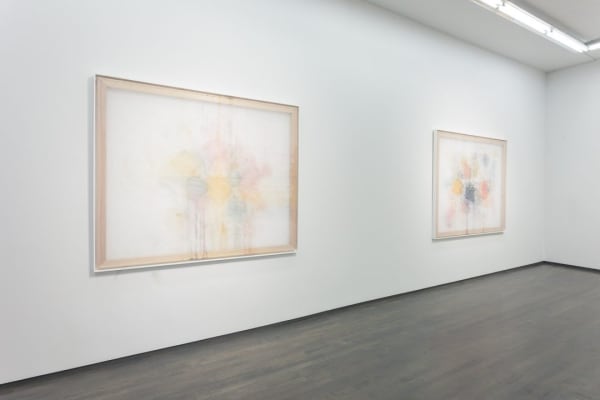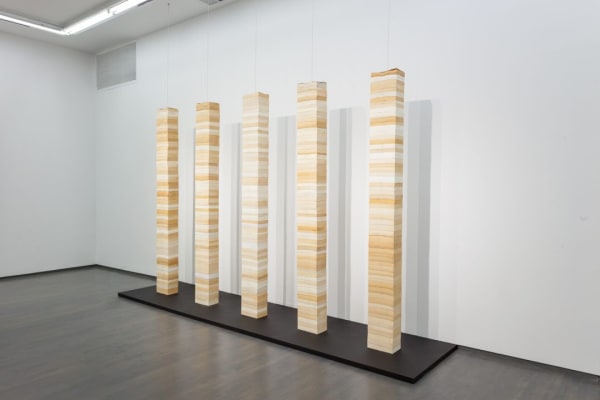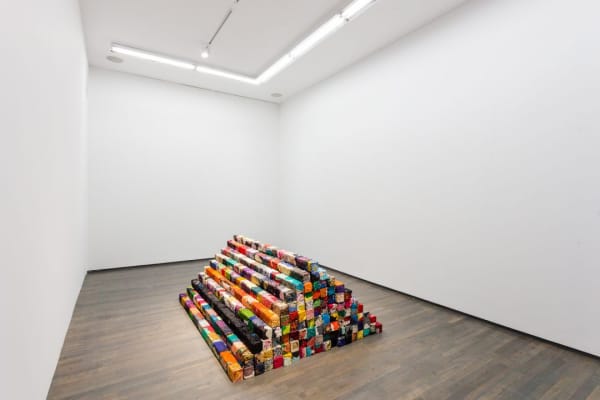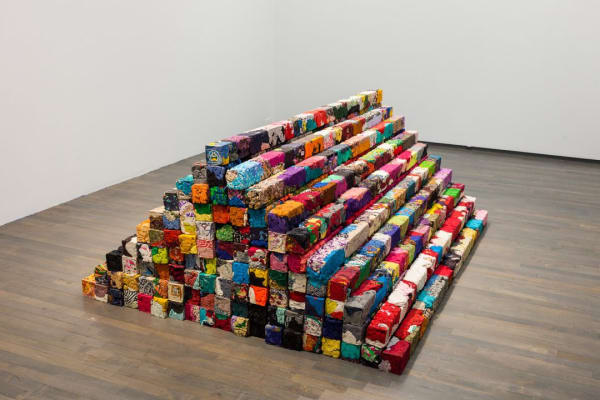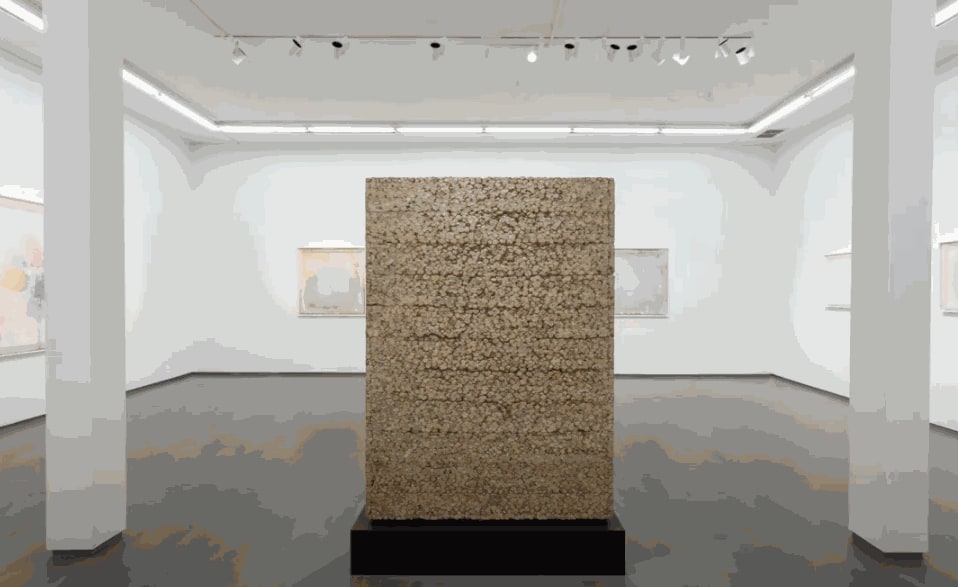Manish Nai, A History Of Gestures: Kavi Gupta | 835 W. Washington Blvd., Chicago, IL
Kavi Gupta is pleased to present Manish Nai’s second solo exhibition with the gallery, A History of Gestures. Nai’s iconic vision for socially-conscious minimalism has earned him global attention as a crucial voice for Indian art today. Paying mind towards the complex intersections of material culture, art history, class relations, and autobiography, Nai’s geometrically simple forms distill the essence of contemporary Mumbai. Known best for employing indigo-dyed jute, used clothes, and the diverse newspapers of India as the raw material for his practice, Nai’s newest bodies of work expand to include whole used books and mosquito nets.
These new bodies of work expand upon Nai’s ongoing meditation on time itself. Time has always been a chief concern in Nai’s practice, compressed layers of paper, jute, and clothing slowly setting into distinct strata like sedimentary rock. The innumerable pages and subtle tonal shifts of his new book pillar sculptures recall that tradition in his work, but their sequencing as distinct layers bring a new kind of clarity to the substance. While the forms are cleaner and more minimal than ever before, the contents remain elusive, refusing access to their text. Their history as books immediately accessible, but their content as text is arrested in time, frozen inside the sculpture. The small compressed books are slightly more generous with access to content, their covers serving as pedestals for their former contents, now twisted into gnarled knots. Text from the books gives brief flickers of legibility, but the organic forms twist and turn away from inquisitive eyes.
The mosquito net paintings similarly crystallize time, laying out a history of gestures. Nai stains them with watercolor or thinned acrylic, much of which passes through the thin, perforated surface with ease. While much of the paint may pass through one layer onto another, the remaining stain has a permanence and honesty that almost relates to photography. The surface becomes a frozen moment in time, a perfect portrait of every choice made in making, with no room to hide, no opacity for coverup, no chance for erasure.
In the side room, a pyramid comprised of used clothes, compressed into pillars, revisits one of Nai’s signature materials. Nai’s practice at large always circles back to the landscape of contemporary urban India, each material choice (including the books and mosquito nets) a reality of the everyday in Mumbai. The most densely populated megacity in the world, Mumbai is highly cosmopolitan, while still maintaining a distinct Indian character. This mass density of people, history, and material in a common geographic context informs Nai’s use of used clothing, the formation of the clothing into pillars, and the near-architectural logic of their arrangement.
These kinds of choices extend to all of the sculptural work in the show, each piece a dense coalescence of material, each material being substantial to contemporary India, and each form based in a logical geometry that is equally related to minimalist sculpture and urban architecture. They are brought to life by Nai’s hand and the organic potential in their manipulation, unexpected possibilities blooming forth from their seemingly mundane substances.
Manish Nai was born in 1980 in Gujarat, India. He holds a Diploma in Drawing and Painting from the L.S. Raheja School of Art in Mumbai. Nai’s position – rooted in the treatment of materials that come from his immediate surroundings and environment – has emerged as one of the most unique and promising positions in art of the Indian subcontinent. His work has been shown in group exhibitions at the Kasturbhai Lalbhai Museum, Ahmadabad (2019), tthe NTU Centre for Contemporary Art, Singapore (2018), the Smart Museum of Art, Chicago (2018), and the Dr. Bhau Daji Lad Museum, Mumbai (2018). He has participated in the 2nd edition of the Kochi-Muziris Biennale, Kerala (2014) and The Sculpture Park at Madhavendra Palace, Rajasthan (2017-18). Solo exhibitions of his work have been held at the Fondation Fernet Branca, St. Louis, France (2017) and Het Noordbrabants Museum, Den Bosch, The Netherlands (2018). He lives and works in Mumbai.













